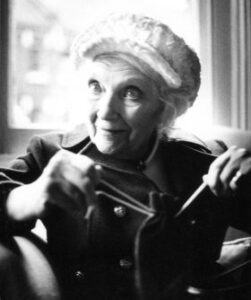Wide Sargasso Sea which was published in 1966 by Jean Rhys is a prequel to Charlotte Bronte’s novel Jane Eyre. She through her writing, wanted to provided voice and historical context to Bronte’s ‘Bertha’ or ‘Madwoman in the attic’. Wide Sargasso Sea has been a text of great discussion among the critics in the field of Postcolonialism, Feminism, Psychoanalysis and other modernist literary theories. The blog intends to examine the intersections of Psychoanalytic feminism along with Postcolonialism, looking at the race and identity crisis in the light of Bhabha’s Hybridity and relating it to Psychoanalytic Feminism with Julia Kristeva’s Abject theory. The paper ends by bringing light on how negligence drove Antionette to insanity.
The story …
Wide Sargasso Sea 1966, Jean Rhys magnum opus is a story of a Creole heiress Antionette who is also known as Bertha Mason in Charlotte Bronte Jane Eyre. The novel begins in Jamaica after the Emancipation act of 1833 through which slavery was abolished in every Britain colony.
Strands of post-colonial Feminism
The novel can be considered as a description of the impact of postcolonialism on the psychological state of the protagonist.
In postmodern literature, after the fading away of the colonial discourses and the rising of literary voices from the former colonies on issues like self-identity, there appears a new literary genre, in which the writers try to give voice to the margins’ cultural, political and sociological identity and question the imposing power of the supposedly superior mainstream society. “Especially with the impact of second wave postcolonialism, the postcolonial writers in literature started to write for a specific purpose, using the language of the mainstream power and aiming at the same target.” (Ashcroft 23). The concept of hybridity, a central term within postcolonial criticism, has in recent years grown in importance and popularity; it is used to understand and interpret what it means to be a migrant, to not belong to one place only, to be a hybrid. “These hybrids live “’border lives’ on the margins of different nations, in-between contrary homelands.” (McLeod 217). During her life time Jean Rhys was unable to assimilate into the English culture due to her outsider status, through her character Antionette in her work she has portrayed the loss of identity pertaining to this ‘in-betweenness’.

In his Location of Culture, Bhabha argues that “Hybridity is the sign of the productivity of colonial power, its shifting forces and fixities; it is the name for the strategic reversal of the process of domination through disavowal (that is, the production of discriminatory identities that secure the ‘pure’ and original identity of authority)” (112). He further remarks that “the display of hybridity – its peculiar ‘replication’ – terrorizes authority with the ruse of recognition, its mimicry, its mockery” (115). Therefore, “mimicry emerges as the representation of a difference that is itself a process of disavowal” (86). Bhabha’s theory raises the question of whether the colonized can maintain his/her sanity, being in an ambivalent space, “always the split screen of the self and its doubling”. (156)
Just as Bhabha describes the “[I] of the mimic man” with no presence of individuality behind its mask, Kristeva remarks “the discourse of borderline subjects” is comprised entirely by “abjection”. She defines this feature as “what disturbs identity, system, order. What does not respect borders, positions, rules”, and what is “above all ambiguity” (4).
By discussing the Creole status, troubled past and the constant struggle for identity by Antionette Cosway, Rhys brings to focus more complex histories of England and Jamaica. As well as highlighted the effect of race and gender inequality amongst Creoles and the inadequacy of the political measures alone, when it comes to addressing these complex social problems. Because of its location within a matrix of both, post-emancipation changes in Jamaica and gendered hierarchies among the creoles it has enabled the discussion by blacks towards the “White niggers”. The Cosway family was considered as white cockroaches on the island and the novel gives the readers the incidents of brutality paved by black niggers against the white niggers.
Antionette is abjecting herself from her very childhood. Her sense of rejecting her self-identity is to be blamed on her relationship with her mother, being disliked by her family members as well as her own community and her lack of a reliable kin to find solace, pushed her more into self-denial apparently, we see Antionette growing aloof from her family as well as herself as the years pass by. As we read through a close reading, we realise that all she could in her family was a fain mother-figure who never considered to have a close relationship with her, and had already abject her “she pushed me away, coldly, without a word, as if she had decided once and for all that I was useless to her” (20).
Antionette through the course off the work is under tremendous struggle to come in agreement with her identity as well as her being. The negligence she faces on the societal, parental and married life surface drives her into insanity. In the second part of the novel Antionette tells Rochester about her family’s past this could be the first time the readers could witness her coming in contact with her inner true self which she had been escaping all this while. This instance leaves her emotionally troubled since it makes her question where does she actually belong in her community, her family and where does she stand in her relationship.
Throughout the novel, Antoinette tries to identify with “The Miller’s Daughter”, “a lovely English girl with brown curls and blue eyes and a dress slipping off her shoulders” (Rhys 32) her sense of self is in disillusion due to her want to be identified as a beautiful English woman to gain Rochester’s approval for being beautiful. Through her continuous mimicry as a white she is abjects her sense of self which affects her sanity later.
Antionette’s sense of the loss of agency had also been one of the factors which affected her sanity. The lack of a reliable person throughout her life such as the lack of a maternal figure, a father figure, a husband or a friend had always pushed her to mental conflict where she had started judging herself and later in the novel also confesses that she preferred to die.
The reader Antionette developing two conflicting personalities within herself through the course of this novel. The first of this personality is submissive, suppressed and looking for love and condolence. And the second is the personality which continuously abjects herself pertaining to how people treat her. Antionette is in continuous war with herself- The war to fit in, fit into her community, fit into her family, fit into her married life and this conflict is at the cost of her sanity as well as her sense of self-esteem. Kristeva continues: “abjection is elaborated through a failure to recognize its kin; nothing is familiar, not even the shadow of memory” (5). Through the admonitions and abject we could witness Antionette forcing herself to believe that she is unworthy and someone who should be an abject from the society.
Through Jean Rhys’ ‘Wide Sargasso Sea’ she voices justice for Antionette Cosway Mason by portraying the domination and oppression of the postcolonial and the patriarchal society. Antionette is forced to mimic cultures, people in order to be accepted among people her hybridity and her failure to understand her hybridity results into further dejection of herself and drives her into oppressing herself and destruct herself mentally, emotionally and later rather physically too. She had never been able to separate herself from the abject as Kristeva says, instead she starts identifying herself and in this conflicted journey she loses herself and her emotional balance which results into her being locked in an attic as an abject.
Works cited:
Ashcroft, Bill, Gareth Griffiths, and Helen Tiffin. The Empire Writes Back: Theory and Practice in Post-colonial Literatures. London: Routledge.1989. Accessed 18 November 2021.
Bhabha, Homi K. “Of Mimicry and Man: The Ambivalence of Colonial Discourse.” The Location of Culture. London: Routledge, 1994. Accessed 18 November 2021.
Bhabha, Homi K. The Location of Culture. London and New York: Routledge, 1994. Accessed 18 November 2021.
Brontë, Charlotte. ‘Jane Eyre’. New York: Dodd, Mead & Co, 1943. Accessed 18 November 2021.
Kristeva, Julia. ‘Approaching Abjection.’ Powers of Horror. Trans. Leon S. Roudiez. New York: Columbia UP, 1982. Accessed 18 November 2021.
McLeod, John. Beginning Postcolonialism. Manchester: Manchester University Press, 2010. Accessed 18 November 2021.
Rhys, Jean. Wide Sargasso Sea. W. W. Norton & Company, New York, 1992. Accessed 18 November 2021.

About the Author….
Ahmed Hasson is a 4th year PhD student in University of Sussex, Law School, United Kingdom.
